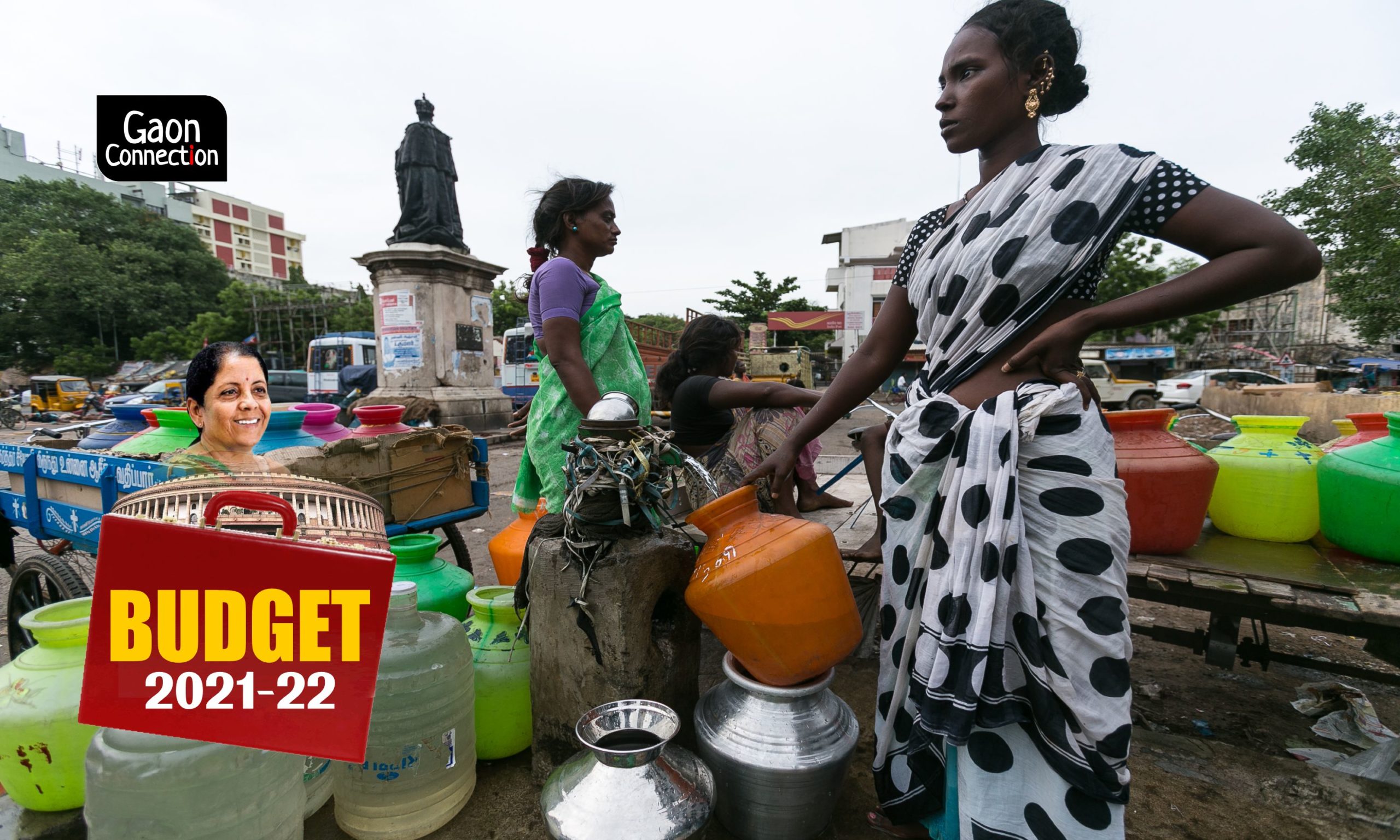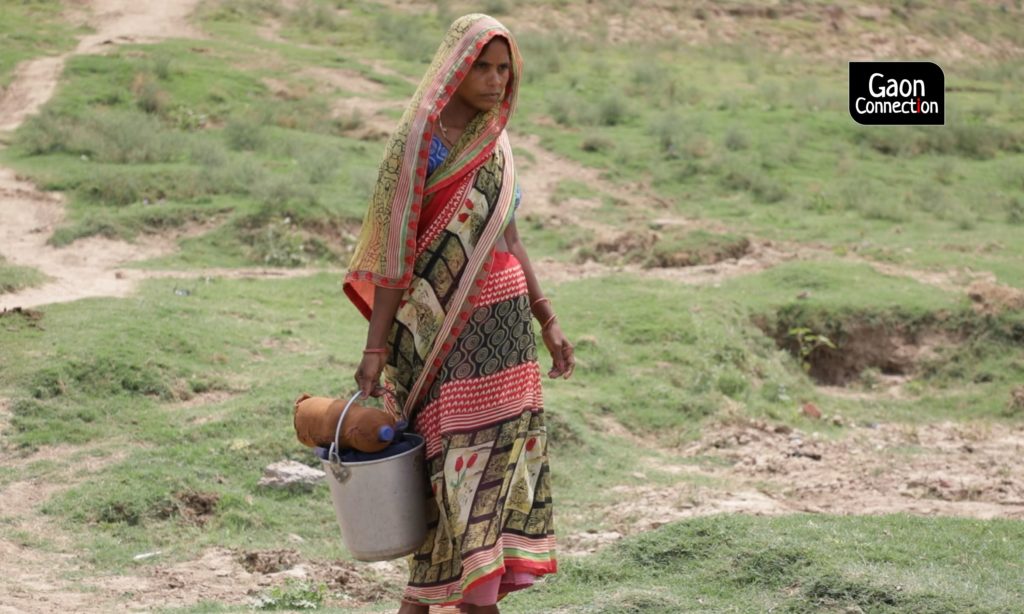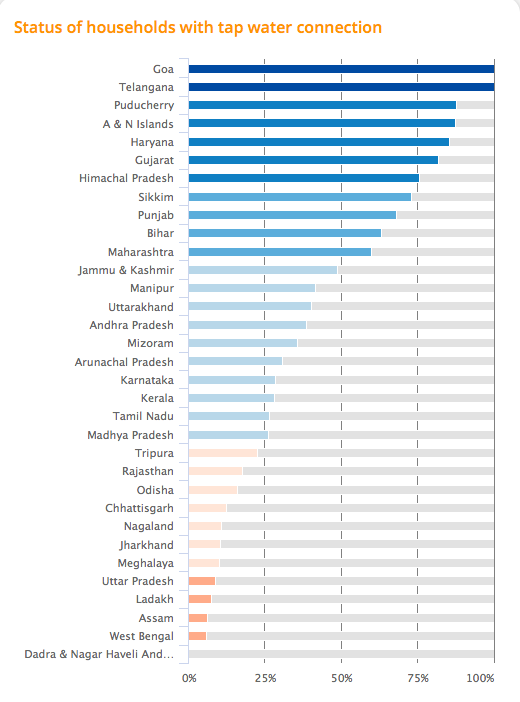Budget 2021: Jal Jeevan Mission Urban launched, Rs 287,000 crore allocated for five years. Meanwhile, only 34% rural households get tap water
After launching Jal Jeevan Mission Rural in 2019, the Modi government has launched Jal Jeevan Mission Urban in Budget 2021. Experts have welcomed it, but the real challenge lies in source sustainability and the quality of water supply. At present, only 34% rural households get tap water under Jal Jeevan Mission Rural.


Pic: Amar Ramesh/flickr
On February 1, in her Union Budget 2021-22 speech in Parliament, finance minister Nirmala Sitharaman announced the launch of Jal Jeevan Mission Urban. The aim of this mission is to bring safe water to 28.6 million households in 4,378 urban local bodies through tap connections under the universal coverage of water supply.
Apart from tap water connections, the thrust of this new scheme is also on liquid waste management in 500 AMRUT (Atal Mission for Rejuvenation and Urban Transformation) cities. The mission will be implemented over a period of five years with an outlay of Rs 287,000 crore.
Meanwhile, Budget 2021-22 has also witnessed a steep increase in funds allocated to the Department of Drinking Water and Sanitation under the Union Ministry of Jal Shakti. In 2019-20, the department was allocated Rs 18,264.26 crore, which came down marginally to Rs 17,023.50 in 2020-21. In the fiscal 2021-22, the department has been earmarked Rs 60,030.45 crore. This is a jump of over 3.5 times.
“A separate Jal Jeevan Mission for urban India is welcome and the budget outlay is also good, as cities and towns have been struggling with water and sanitation issues,” Namrata Ginoya, manager – resilience and energy access, World Resources Institute (WRI) India, told Gaon Connection. “However, the challenge lies in sourcing water locally and supplying safe drinking water. Tap water connections in cities and towns should not translate into building more dams and ecologically destructive infrastructure,” she said.
Suresh Kumar Rohilla, senior director with Centre for Science and Environment, New Delhi, raises similar concerns. “The Jal Jeevan Mission Urban takes note of a large number of issues related to water and sanitation that civil society and sector experts have been raising. So, it is a good thing,” he told Gaon Connection.
“But the question remains where will water for 28.6 million urban households come from? A large number of cities and towns already face water scarcity. Most urban water bodies are polluted and encroached. Sourcing safe water locally will need proper planning,” he said. “At present, it seems we have put the cart before the horse. The tap and pipeline may reach, but what about the water in it?” he asked.
Take the case of cities such as Delhi, Mumbai, Bengaluru and Chennai. They source their water from hundreds of kilometres away through large pipelines. Some percentage of water is lost during this transit. The hinterland remains parched. And, a large number of rural households still do not have tap water supply and women have to walk long distances every day to fetch water.

Progress report: Jal Jeevan Mission (Rural)
It was in 2019 that the Narendra Modi government launched its flagship scheme of Jal Jeevan Mission (Rural) to provide tap water supply to rural households. The aim is to cover all rural households by 2024.
According to official data, as of today (February 3), of the total 191,781,211 rural households, functional tap water connections have been provided to 65,777,950 households — 34.3 per cent of the target.
Goa and Telangana have achieved 100 per cent coverage, whereas Puducherry, Andaman and Nicobar Islands, Haryana, Gujarat and Himachal Pradesh have reported 87.97 per cent, 87.53 per cent, 85.52 per cent, 82.06 per cent and 75.64 per cent coverage, respectively (see graph: Status of households with tap water connection).
The worst performing states and union territories are West Bengal (5.9 per cent coverage), Assam (6.26 per cent), Ladakh (7.53 per cent) and Uttar Pradesh (8.97 per cent). The coverage in Dadra & Nagar Haveli and Daman & Diu is zero.

This isn’t the first time the central government has launched a scheme for tap water connections. Despite launching a slew of schemes, it has been struggling to provide safe drinking water to rural households.
The Report of the Comptroller and Auditor General of India (CAG), tabled in Parliament in August 2018, found that the government had failed in achieving the targets of the 12th Five year plan (2012-2017) under its central flagship National Rural Drinking Water Programme.
Under the programme, the government had announced to make safe water accessible to all rural habitations, government schools and anganwadis, and potable water to 50 per cent of rural population. Besdies this, 35 per cent of rural households were to be provided household connections by 2017.
However, as of December 2017, only 18 per cent of the rural population could be provided piped potable drinking water (55 litres per capita per day) while a mere 17 per cent of rural households had household connections, noted the CAG report.
“Providing safe water meaning san fluoride, iron, nitrate, arsenic, salinity, heavy metals and E.coli at a pan-India level is a challenge,” Eklavya Prasad, founder of Megh Pyne Abhiyan, a non-profit working in the field of water and sanitation, told Gaon Connection. “In order to overcome multiple and overlapping challenges, pre- during and post-implementation strategies need to be designed and executed for ensuring the sustainability of safe drinking water projects,” he said.
Himanshu Thakkar, coordinator of South Asia Network on Dams, Rivers & People, raised a similar concern on the sustainability of water sources. “Neither Jal Jeevan Mission, nor the next phase of Swachh Bharat Mission includes sustainability or proper assessment of social and environmental impact, and using this understanding in decision making. So, investment under the mission is likely to be environmentally hazardous,” he told Gaon Connection.

Last summer, amid the novel coronavirus disease (COVID-19) pandemic, Gaon Connection conducted a survey across 23 states and three union territories to document the impact of COVID-19 on rural India.
The survey tried to find out whether households in rural areas had adequate water for handwashing, apart from regular water needs. About 38 per cent of households complained that women had to travel extra to meet the additional water needs of the family due to the pandemic.
Sustainability must be at the core of Jal Jeevan Mission
According to Ginoya, cities and towns must invest in simpler and sustainable solutions, which aren’t highly capital intensive, while implementing the Jal Jeevan Mission. “We need such solutions for building the natural capital of our cities and towns. For instance, a city like Bengaluru receives good annual rainfall and that rainwater should be able meet its water demands locally,” she said.
Similarly, there is a need to ecologically restore urban lakes, wetlands and other local bodies so that cities and towns do not suck water dry from rural areas, where tap water connections are already low in number and droughts are frequent.
“Water sources should be located locally as, otherwise, a large percentage of water is lost during transport. There is also a need to treat and reuse water, which the Jal Jeevan Mission Urban rightly talk of,” said Ginoya.
“The Jal Jeevan Mission Urban will put pressure on water sources, and so, careful planning is needed. The focus has to be on source sustainability. The mission talks about aquifer mapping and rejuvenation of water bodies, which is good,” said Rohilla.
According to Prasad, the Jal Jeevan Mission needs multiple strategies that include social mobilisation for participatory planning of the safe drinking water project, training and development of grassroots cadre, such as Jal Doots. There is also a need to build the capacity of ward and panchayat level community-based institutions. Also, technical handholding and handling of the safe drinking water system by grassroots cadre and community-based institutions for the sustenance of the safe drinking water project.
“These diverse social and technical requirements are non-negotiables in the entire process of providing access to safe piped drinking water to rural households,” said Prasad.

